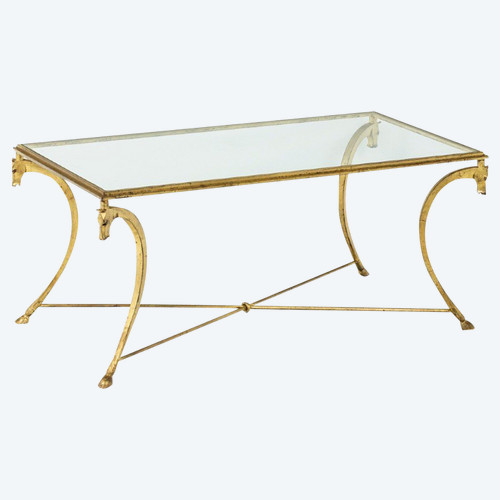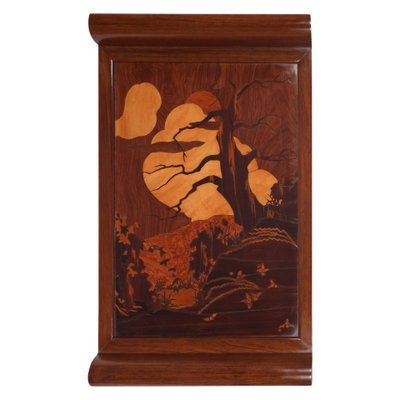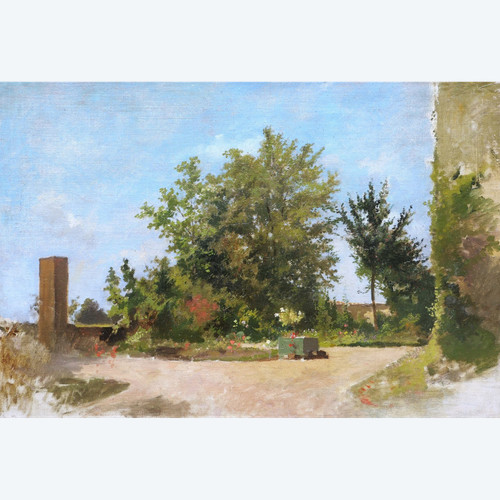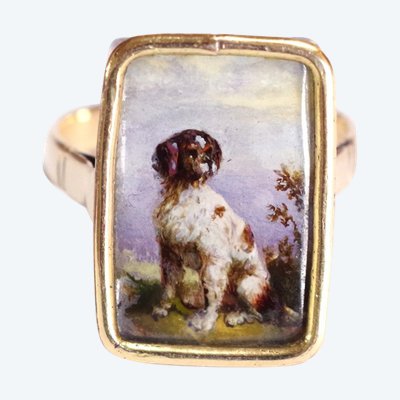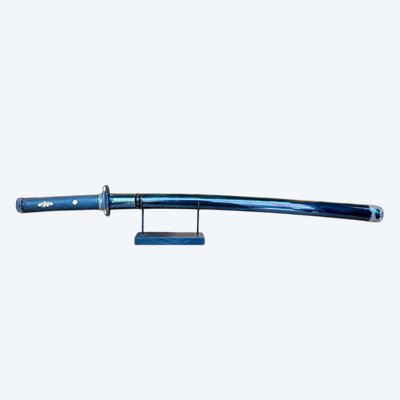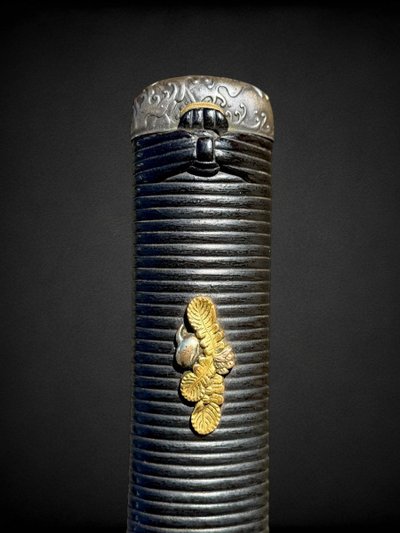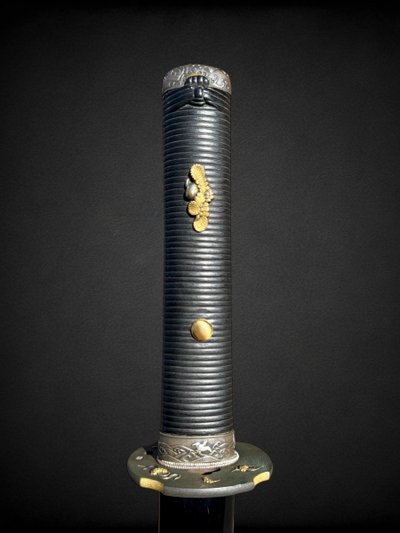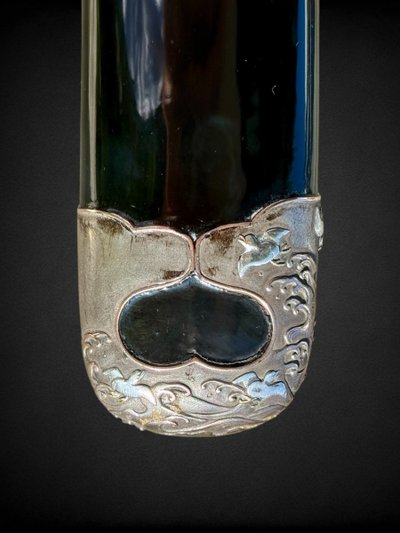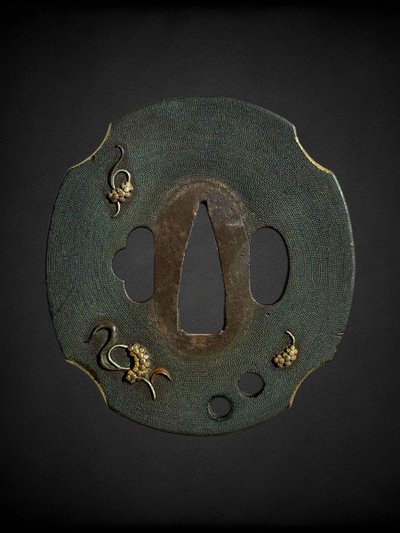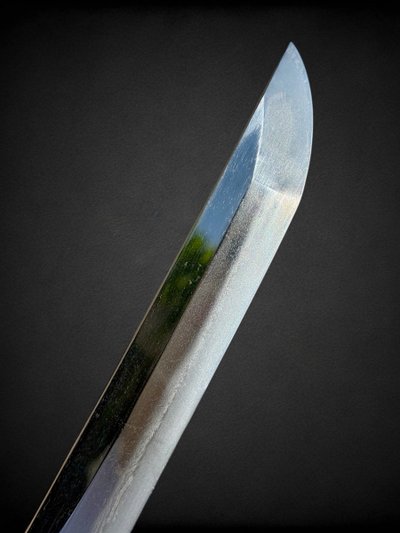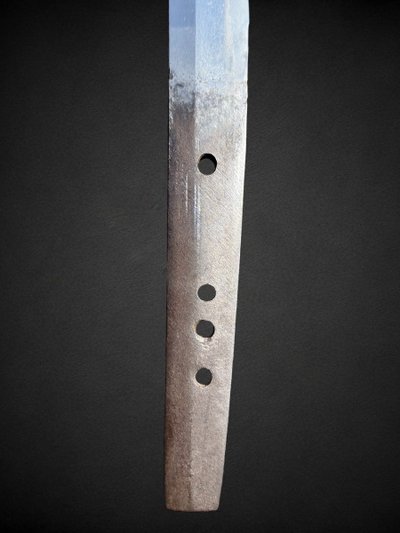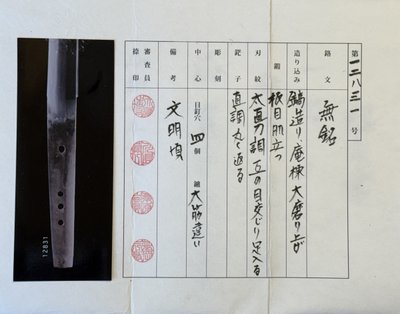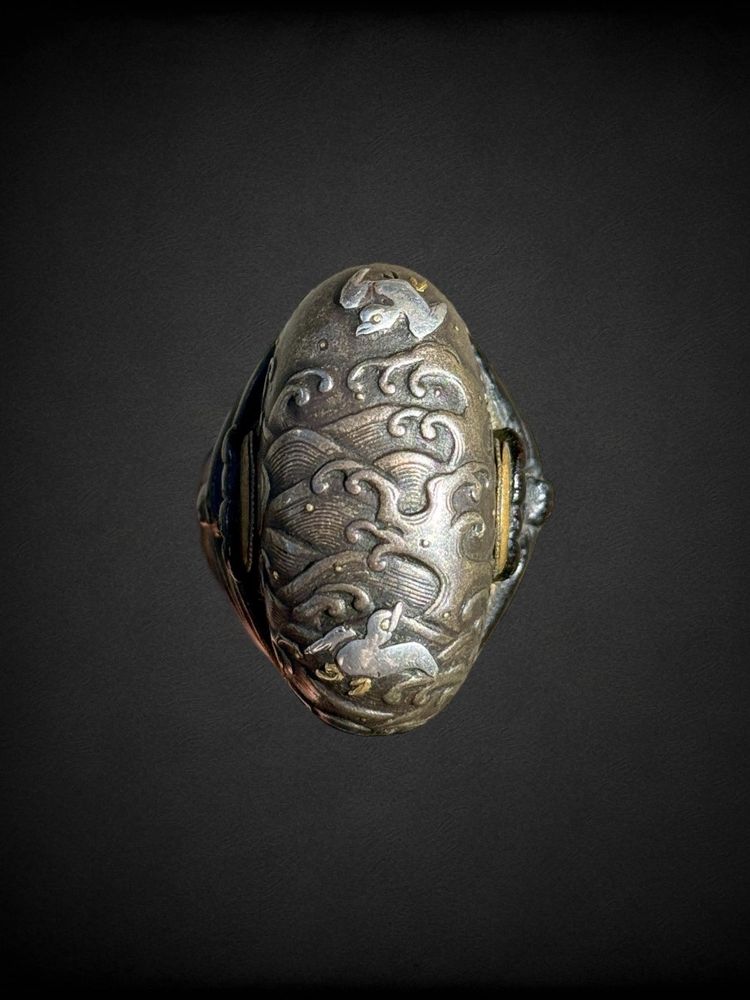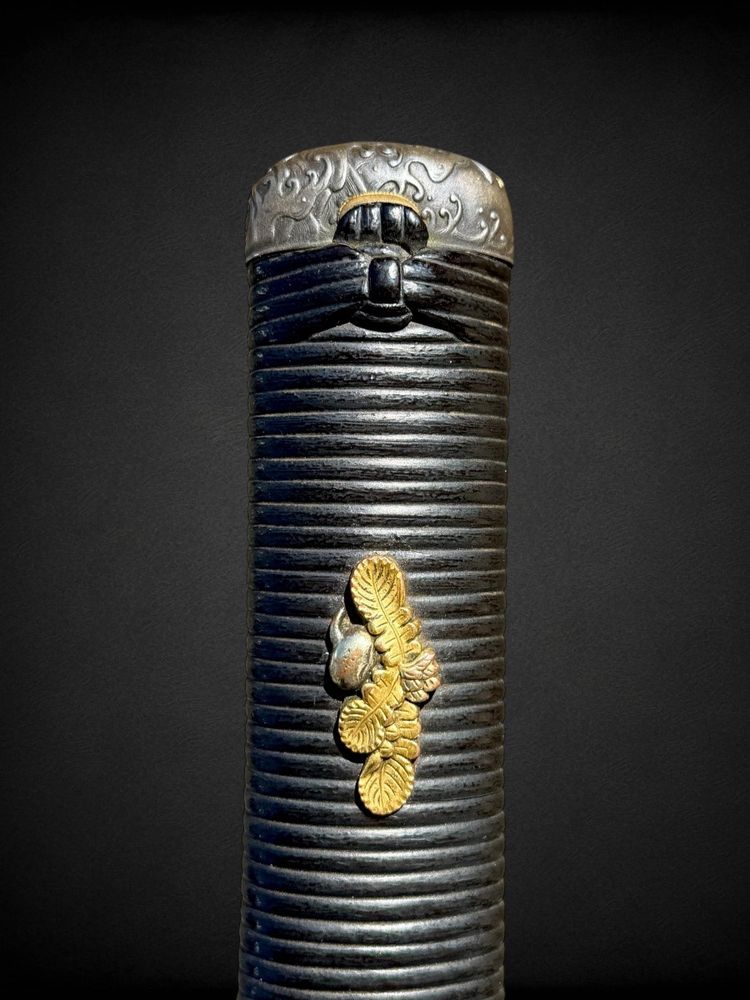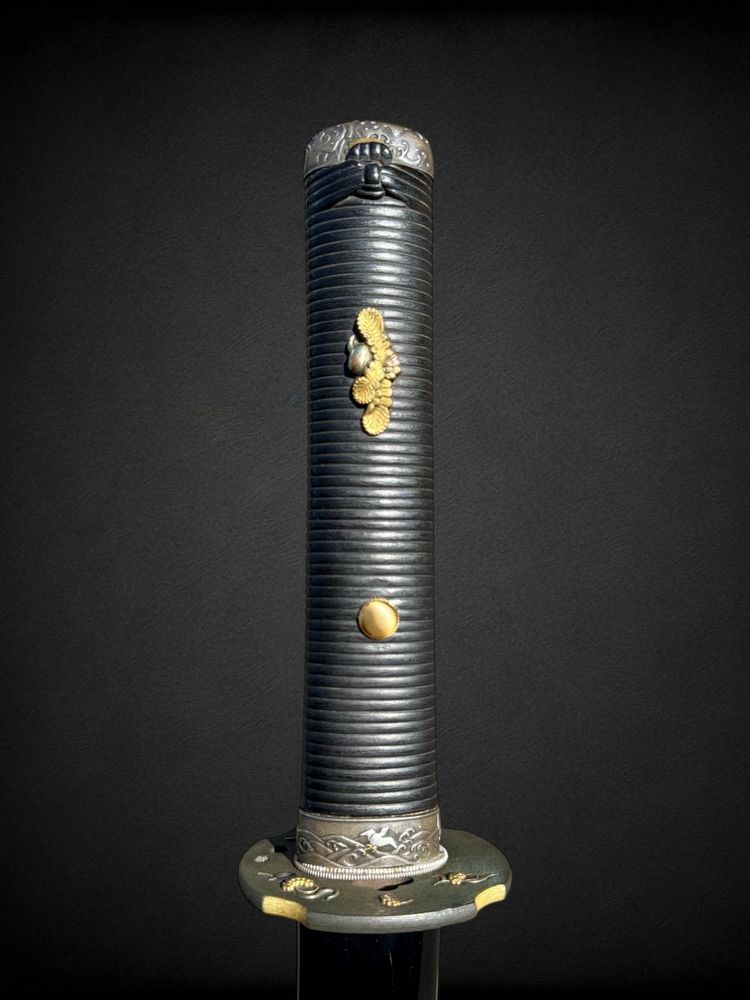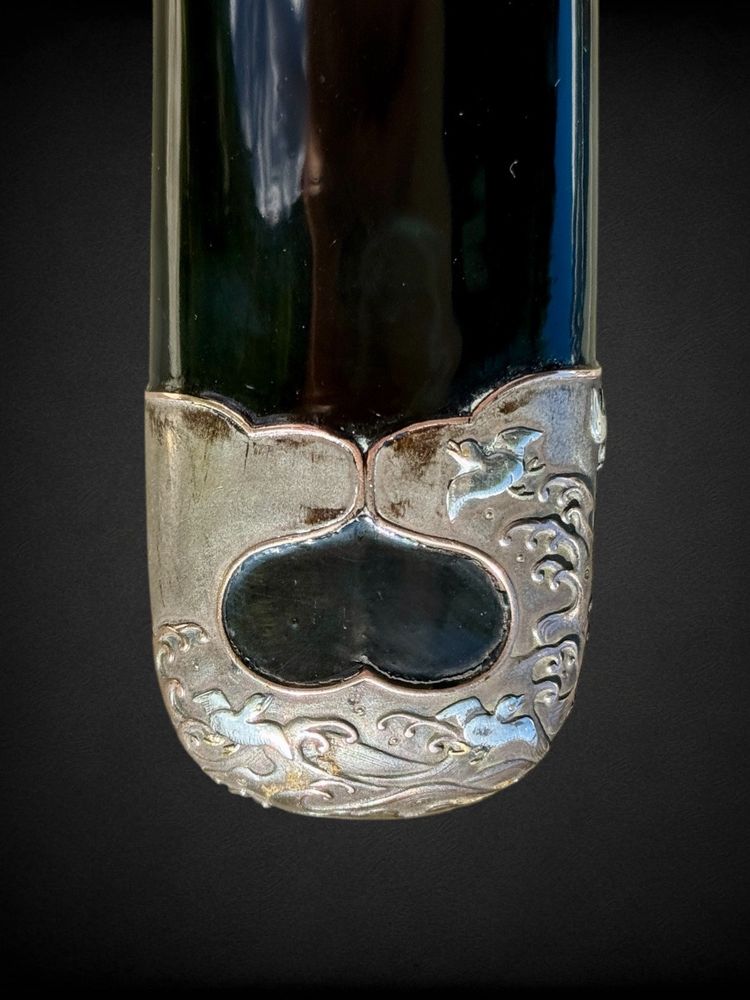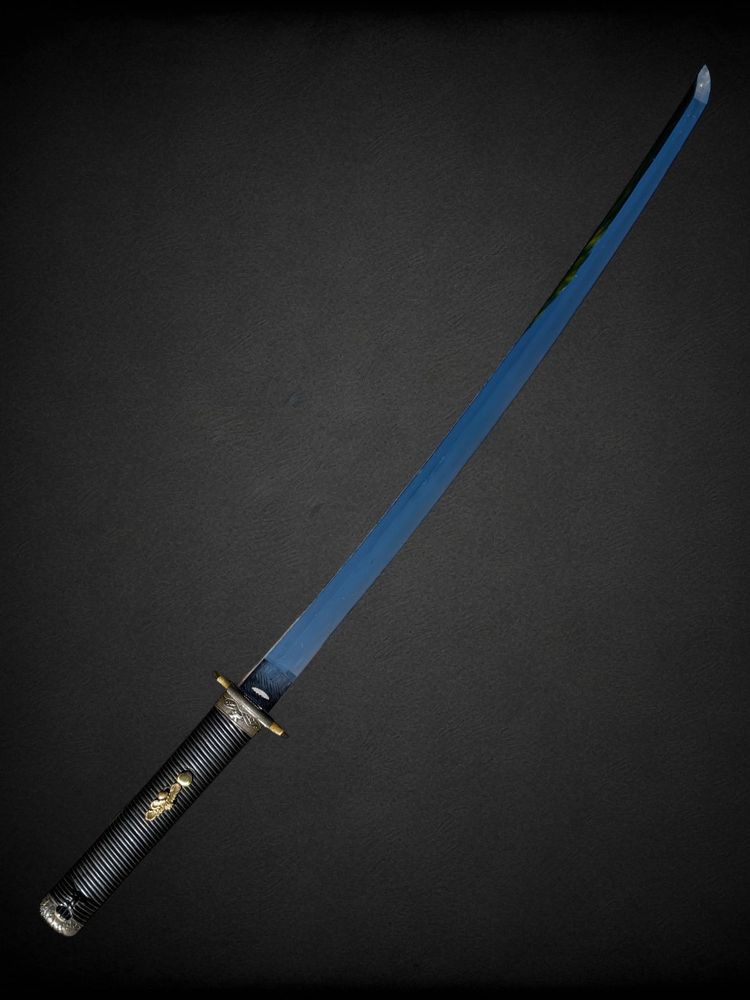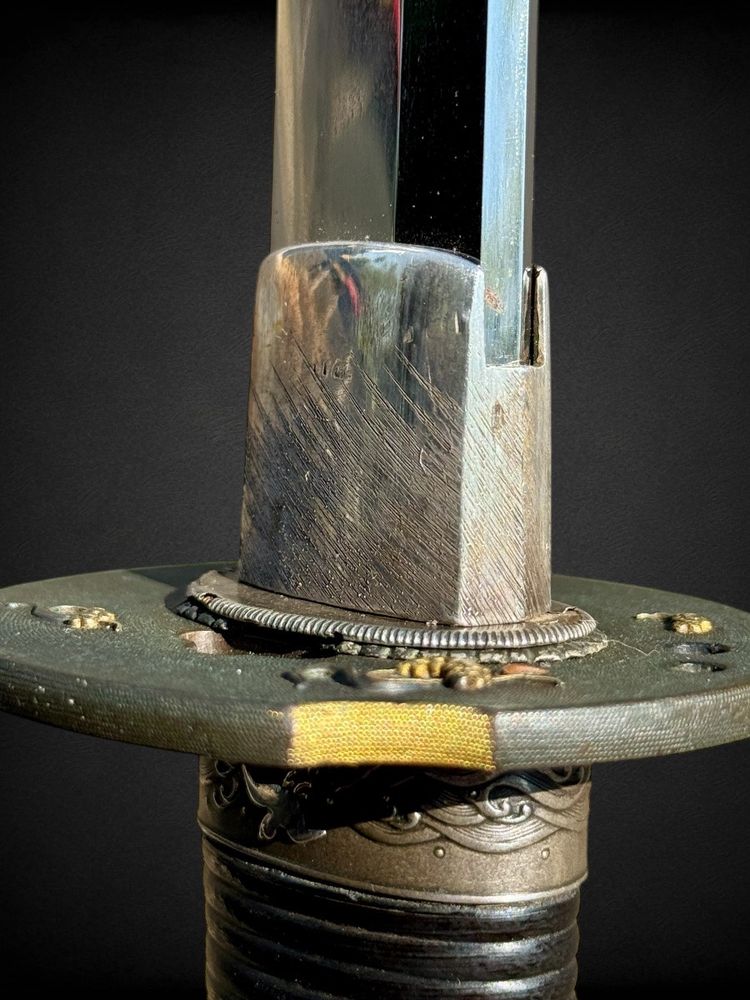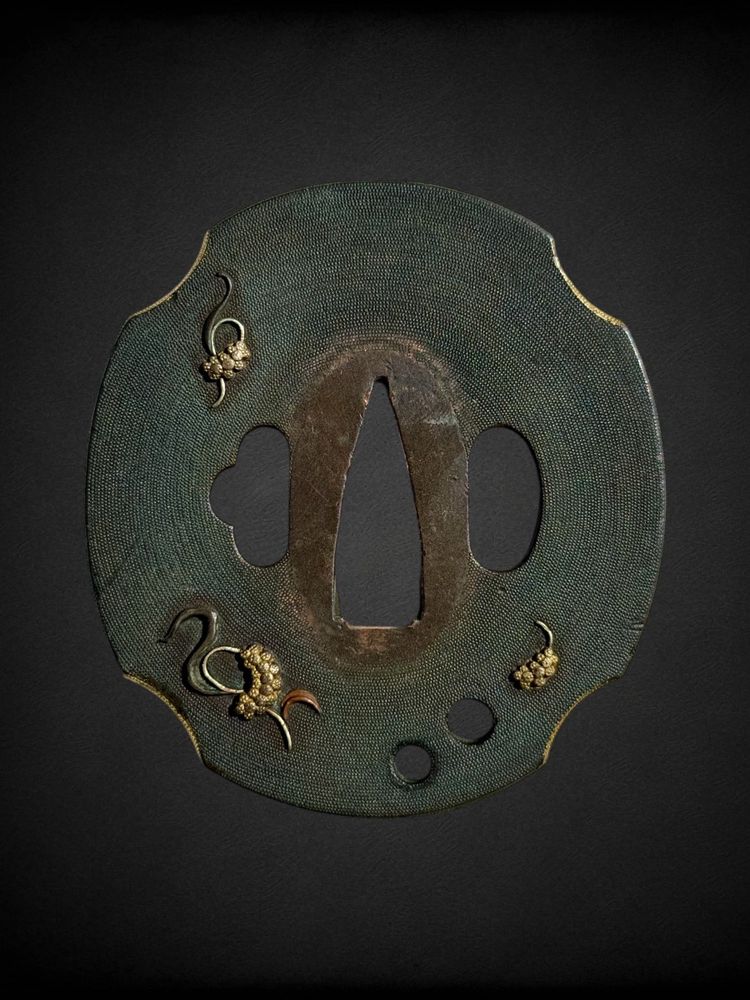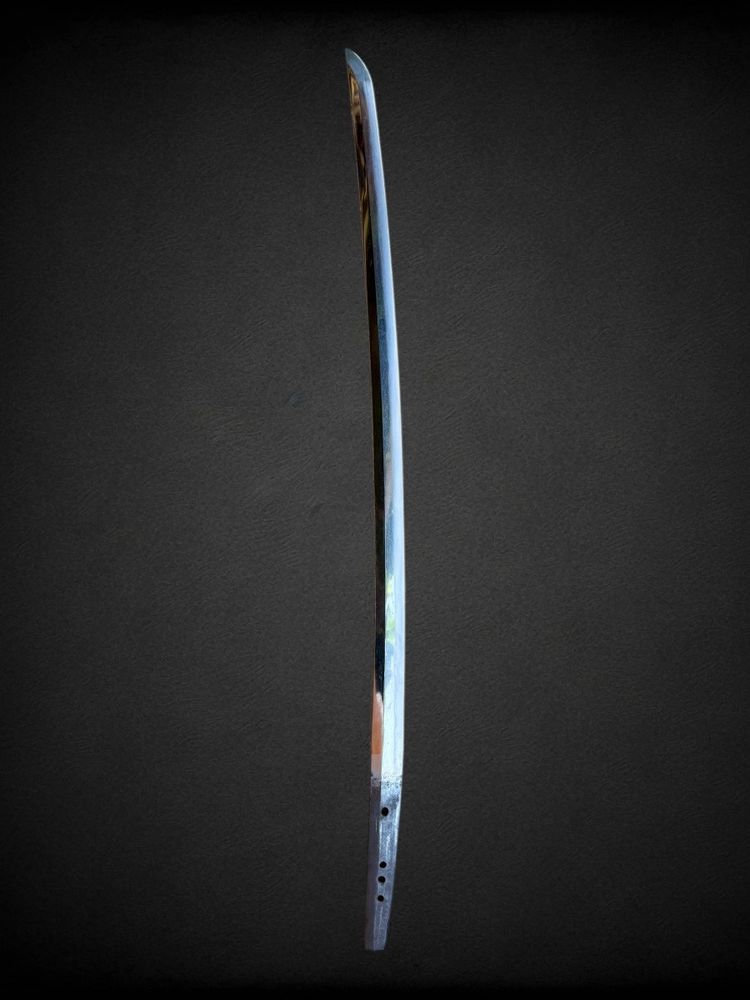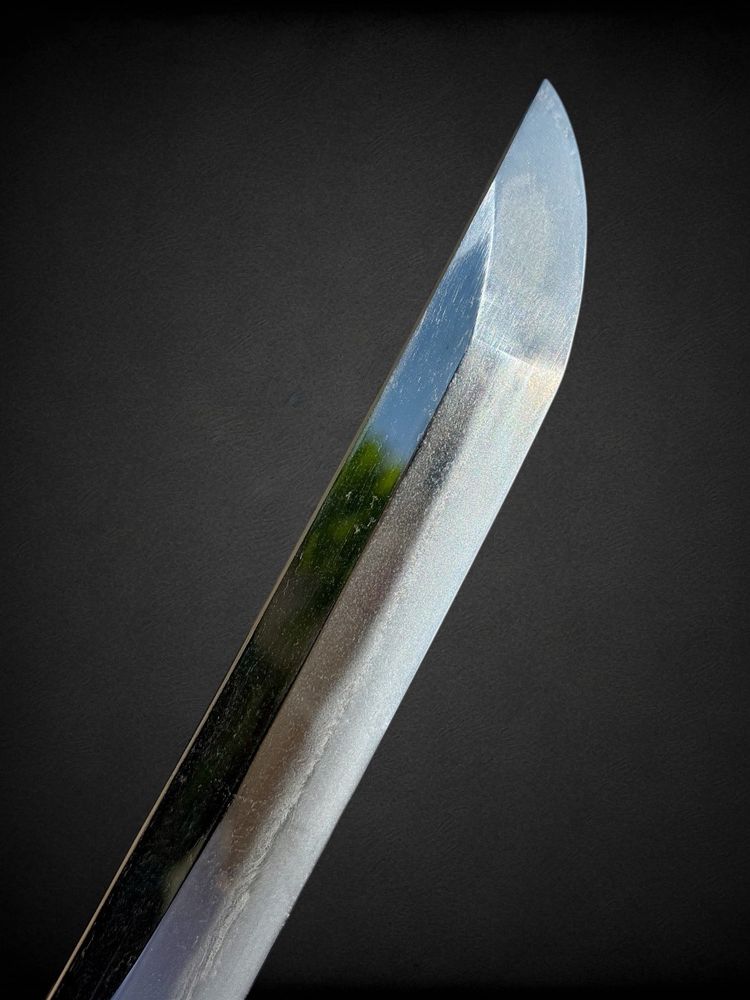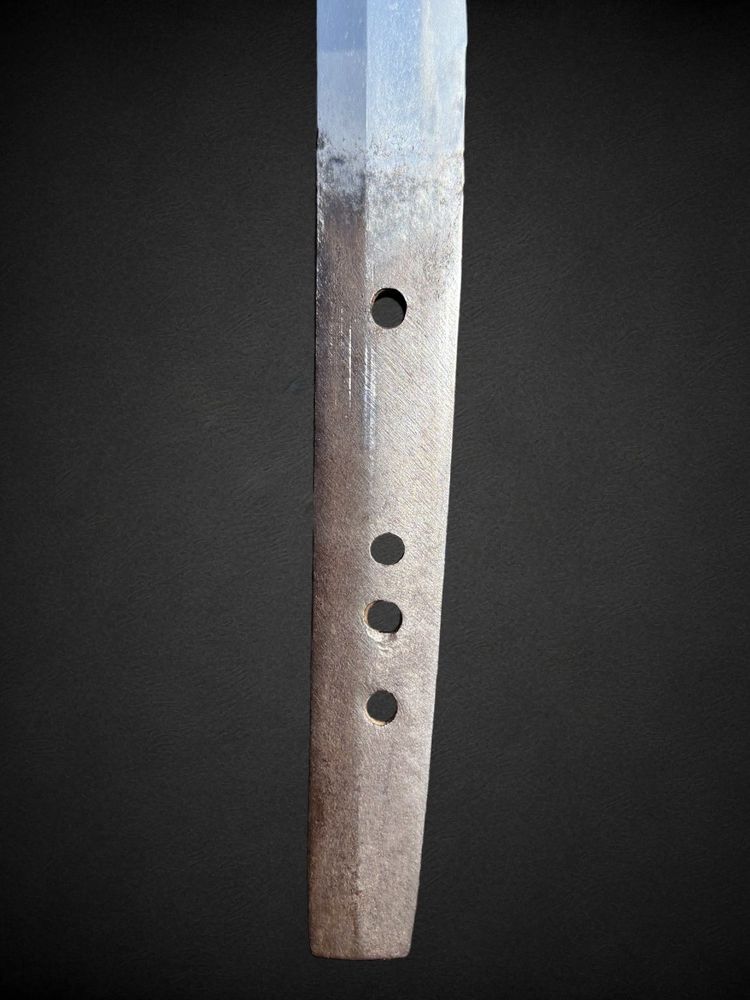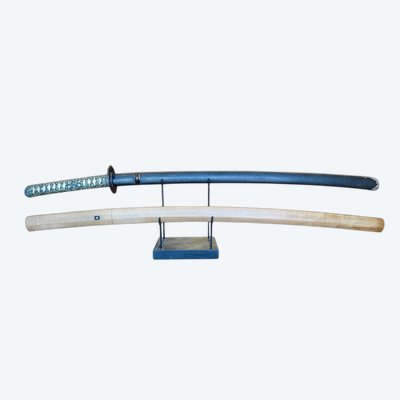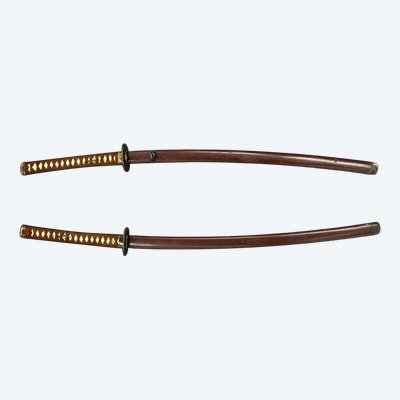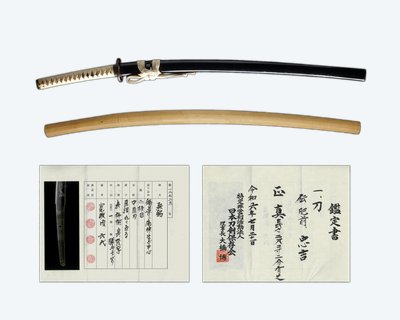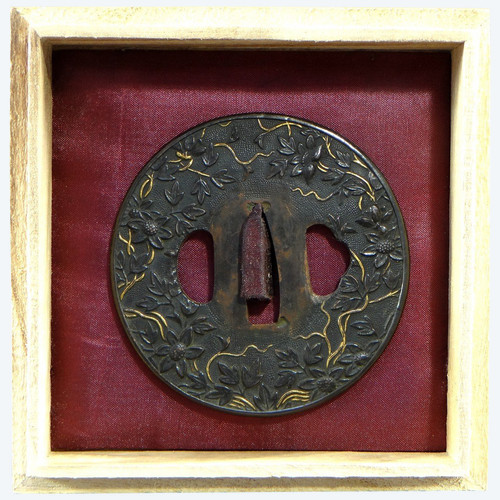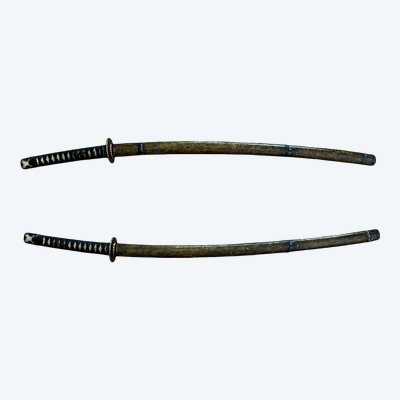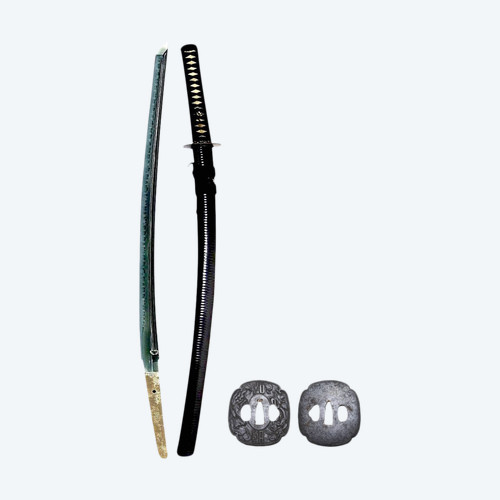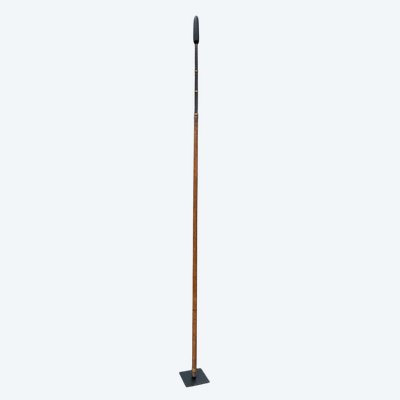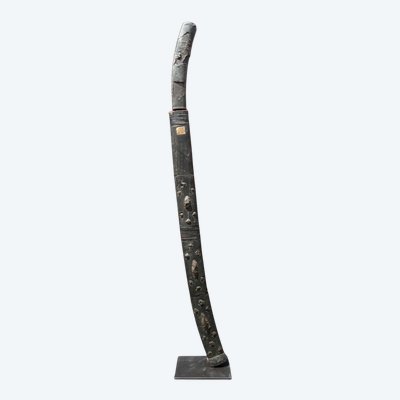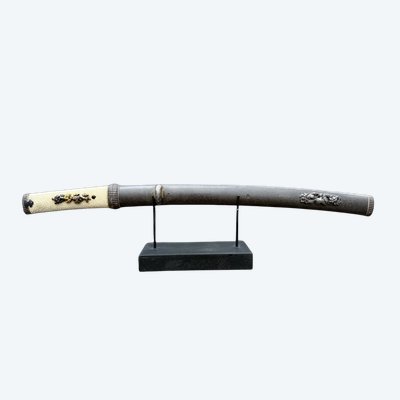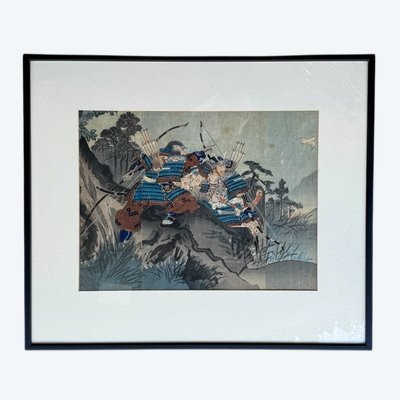This description has been translated and may not be completely accurate. Click here to see the original
JAPAN - Bunmei era (1469-1487).
Samurai katana.
FUSHI - KASHIRA en suite in silver-plated copper decorated with rain birds fluttering above the waves (symbol of good omen).
Black lacquered ringed TSUKA.
MENUKIS in chased and gilded copper featuring turnips.
TSUBA tato-ite-gata in chased, patinated and gilded copper featuring bunches of millet on a very fine nanako background, signed.
SAYA in wood covered with smooth, glossy black lacquer.
HABAKI in silver-plated copper engraved with oblique striations.
Straight blade, hamon regular, straight and well marked, tang with four holes, unsigned. Sold with stand, silk carrying case and NTHK certificate.
Dimensions: 84 x 7.5 x 6 cm.
Blade length with tang: 78 cm.
Edge length: 61.6 cm.
Curvature (sori): 1.1 cm.
Notes : This blade is attributed to Sakakura Masayoshi, during the Bunmei era (1469-1487: Mid Muromachi period) in Noshu, according to NTHK's assessment. Noshu is another name for Mino province (now Gifu prefecture). The name of the maker Masayoshi has lasted several generations, and we believe this blade was forged by the second-generation Masayoshi, who was active during the Bunmei era.
He forged swords in the town of Sakakura, near the town of Seki (the central area of Mino province), which is why he was also known as the blacksmith of Sakura Seki. He also forged swords in Akasaka, another sword-making center in Mino province. His son, Masatoshi, also became a famous Sakura Seki sword smith in Mino. Sakakura Saki is said to have had a technological exchange with the Muramasa school, a prestigious sword-making school at the time. Masatusgu's signature of Masa (IE) resembles Muramasa's signature of Masa (IE) (FTIE) to support this reasoning.
The style of MINO smiths, also known as MINO-DEN, essentially has TOGARI (pointed shapes protruding from the Hamon) in a classic straight line and a random temper line with white Utsuri. MINO-DEN originated in the late Kamakura period (1280-1330), flourished in the Muromachi era (1333-1573) and continued into the Edo period (1603-1868).
MINO-DEN particularly flourished during the Sengoku Jidai (Warring State period), due to the high demand for weapons. And the location of Mino province beat all others. Akechi Mitsuhide controlled Mino province, and Nobunaga Oda ruled Owari province, and Tokugawa leyasu was lord of Suruga (neighboring regions). These powerful feudal lords and their servants were in great demand. Moreover, many wars took place between the Kanto region and the Kyoto region, and Mino is located in the middle, so feudal lords felt comfortable ordering swords from MINO-DEN. Blades forged in the MINO provinces were also renowned for their practical design and sharpness. Many feudal lords therefore demanded swords forged in the province of Mino.
Ref: U9EM4TOEZW
 Solid Mahogany And Inlaid Art Deco Tray
390 € EUR
Solid Mahogany And Inlaid Art Deco Tray
390 € EUR

